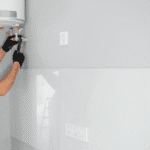Last Updated on July 17, 2024 by Asfa Rasheed
Cutting is a form of self-harm. This deliberate injury to one’s own self is to numb the emotional pain and stress, as the focus then shifts to coping with the physical pain instead. Cuts are often made to the arms, thighs, belly, or wrists. Most often, they are made to areas that are not so visible, however, some people might not hide these marks.
Moreover, people cutting themselves also feel a release of tension when they cut themselves, however, this is soon followed by the shame that this action brings.
However, there is some convoluted sort of addiction that comes with cutting; some might just try is for the sake of trying but may come back to the habit again and again.
Even though the agenda for cutting is not to attempt suicide, but when making one’s self bleed, things may go wrong that then require emergency treatment at the MaxHealth Hospital then; they might make the cut too deep or develop an infection at the site of the wound.
Table of Contents
Reasons for cutting
Addicted
Many people become addicted to cutting. Since it is a compulsive thing, it is inherently more addicting. Moreover, the brief window of reprieve that it offers from the emotional pain can also be addictive.
Control
When people face pain from different facets, it is harder to them to understand where exactly the pain is stemming from. This then make remedying it hard. The loss of control that it symbolizes is also can be overwhelming.
On the other hand, when people cut, they know where the pain is coming from, and can deal with it accordingly.
Emotions
Grief, pain, and other similar emotions are often precursors of cutting. Bearing these feelings can take a lot of toll on the person, and some might then crumble under the burden of so much pain, finding their release in cutting instead.
Similarly, feeling unloved, unwanted, and unworthy are also negative emotions that overtax a person, in response to which they turn to the more bearable form of pain, i.e., cutting.
Influenced by others
At times, people turn to cutting when they see their friends or other people they consider important doing it. It is especially true for the young adults and teenagers, who are more likely to get influence by peer pressure.
Poor coping mechanism
Cutting is also representative of poor coping mechanism. People turn to it when they are not getting or do not want to get help for their psychological problems. They either have a fragile emotional health or are suffering from mental health problems that then makes it harder for them to cope with the ups and downs of life in a healthy fashion.
Trauma
Everyone has a different way of dealing with trauma. When people are unable to find safe outlets to process trauma, they might then turn to unhealthy means like cutting to cope them.
Furthermore, in face of trauma, many people also then become apathetic and tend to dissociate from situations. They then turn to cutting to make sure that they are still able to feel the pain, and not are numb to it.
Way of dealing with pressure
Many people, especially teens, resort to cutting when they are under pressure. They are assaulted with overwhelming feelings, due to which they then turn to cutting for release. Exam stress, relationship issues, parents divorcing are often things that can make the teens turn to cutting.
Mental health problems
People with mental health issues like depression, PTSD, bipolar, OCD are more likely to turn to cutting.
Getting help
It is pertinent that those cutting themselves get timely help. If you are even having thoughts of inflicting self-harm, then you must talk to a confidante about getting help. If you know someone who is cutting themselves, you need to convince them to visit the Best Psychologist in Karachi for help.
Read More: Top 5 Reasons for Tooth Extraction
















